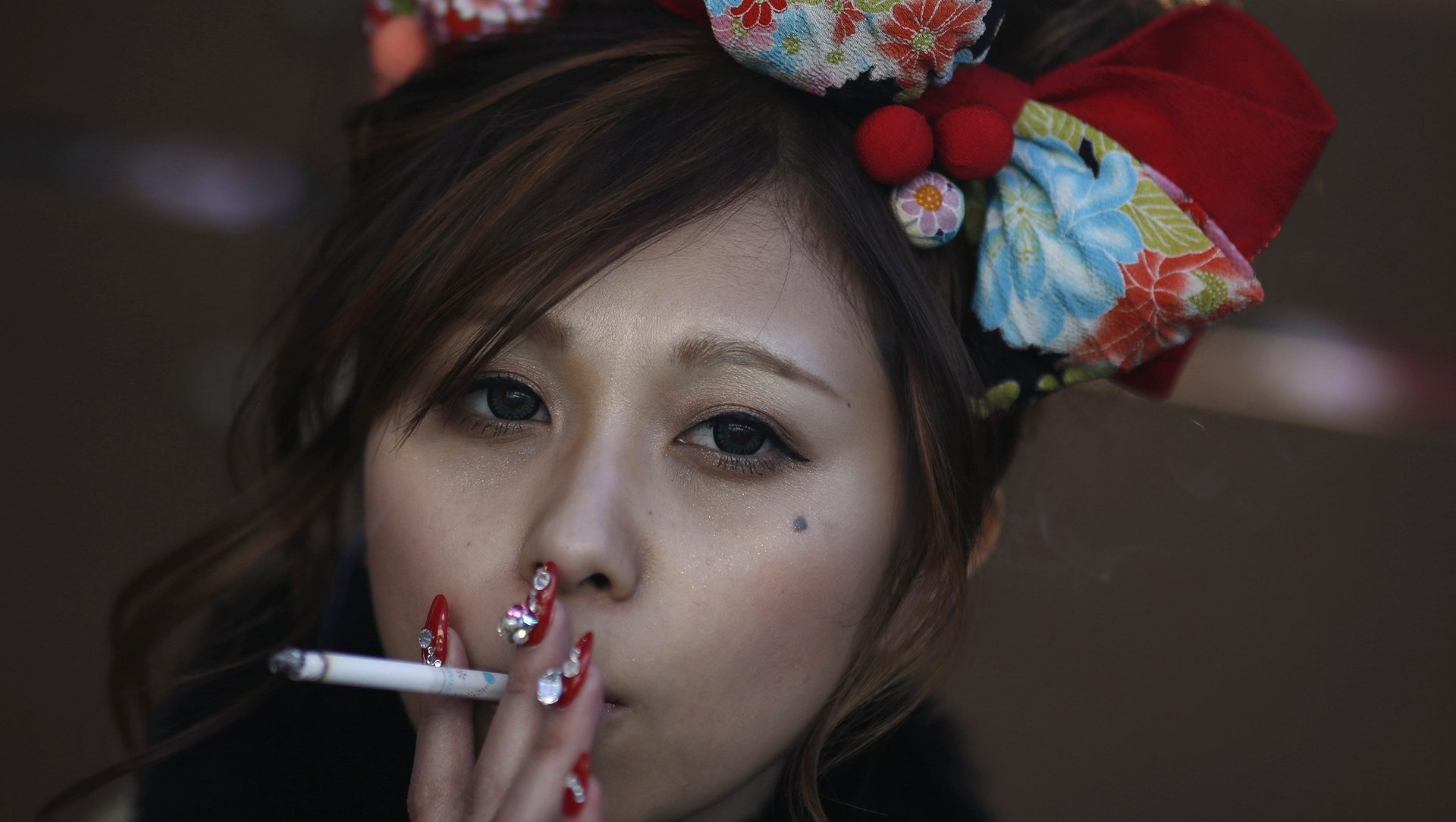Secondhand smoke in Japanese restaurants will soon (almost) be a thing of the past
Going to a restaurant or cafe in Japan and coming out smelling like an ashtray is almost unavoidable.


Going to a restaurant or cafe in Japan and coming out smelling like an ashtray is almost unavoidable.
But in anticipation of the 2020 Tokyo Olympics, Japan’s parliament, or Diet, will debate an anti-passive-smoking bill (link in Japanese, pdf) that aims to ban smoking inside public areas, including restaurants and bars. The health ministry noted that there is a prime opportunity to “use sports” to promote healthier policies ahead of the Olympic games and 2019 Rugby World Cup, which will also be held in Japan. The bill is expected to pass.
Japan has long resisted the global trend towards banning smoking in public indoor and outdoor spaces; its reluctance to do so is particularly conspicuous among developed nations. Part of the reason is that the government has a vested interest in the tobacco industry. It has a 33% stake in Japan Tobacco (JT), which means that it receives significant tax revenue from smokers. As a result of the close ties between Japan’s finance ministry and JT, many government officials also retire to jobs at the company.
Another factor keeping smoking levels high is that cigarettes are much cheaper there than in other developed countries, with a pack costing somewhere between ¥210 ($1.87) and ¥460. In the US, a pack of cigarettes can be as much as $14 in New York. In the UK the average price for a packet of 20 is about $12 and in Australia, which has some of the world’s strictest laws against smoking, a packet of 25 costs about US$19. That could go up to $30 by 2020. Some 30% of men and 10% of women in Japan are smokers, according to 2016 statistics from JT. About 17.3% of adults in the US smoke, according to 2015 World Health Organization data, and 15% in Australia.
Restaurants and bars have long fought against any attempt to limit smoking in their establishments, arguing it would drive customers away. With that in mind, there are exceptions to the proposed law. According to the Asahi Shimbun (link in Japanese), establishments smaller than 30 square meters (323 square feet) would be exempt from the smoking ban, which could include small bars, snack shops, and cramped restaurants specializing in yakitori (chicken on skewers), as well as the popular izakaya-style restaurants where office workers get drunk and eat small dishes after work.
The government said last year (link in Japanese) that in Japan about 15,000 people die annually from diseases related to secondhand smoke.
According to a government survey, most Japanese people said that they had breathed in secondhand smoke at a bar or a restaurant in the past month, followed by amusement halls, such as pachinko parlors.
A restaurant industry group has said that instead of imposing a total ban on smoking, Japan should become a leader in promoting separate smoking areas, according to a report in the Mainichi newspaper. Many cafes and restaurants in Japan do have smoking rooms, but often the smoke still seeps out to the non-smoking areas. Many people go to foreign establishments such as Starbucks (paywall), which has a complete ban on smoking, to avoid passive smoking.
In 2002, Chiyoda ward in Tokyo banned smoking from some sidewalks. Kanagawa, just outside of Tokyo, became the first prefecture to ban public smoking in 2009, but even then the ban exempted small restaurants and hotels.
Desperate smokers and restaurants could consider installing a prefab smoking booth (link in Japanese) developed by Japanese company Ryonetsu (link in Japanese). The phonebox-like contraption has a filter to prevent smoke from leaking out, and retails for ¥216,000 ($1,926).